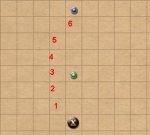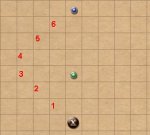Raduin711
Hero
I'm for going back to 1 square diagonals. I hate it when you are counting your diagonals and you second-guess yourself or lose track of your diagonals and you're standing there, miniature in hand, with a dumb expression on your face, trying desperately to remember what space you started from so that you can re-count your movement.
It may not be geometrically accurate but it is a lot easier and makes the game run faster and smoother.
I wouldn't mind seeing the diagonals=1.5 rule as a sidebar optional rule, though.
It may not be geometrically accurate but it is a lot easier and makes the game run faster and smoother.
I wouldn't mind seeing the diagonals=1.5 rule as a sidebar optional rule, though.



